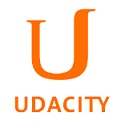 Why doesn’t every child know who the latest Nobel science prize winners are as well as they know their favorite pop singers and sports stars? These scientists should be known — they make discoveries that will affect the future of mankind far more but yet we ignore them except for that once-a-year notice in the media round about October (and most of the news stories are dominated by the political implications of the Literature and Peace prize winners anyway).
Why doesn’t every child know who the latest Nobel science prize winners are as well as they know their favorite pop singers and sports stars? These scientists should be known — they make discoveries that will affect the future of mankind far more but yet we ignore them except for that once-a-year notice in the media round about October (and most of the news stories are dominated by the political implications of the Literature and Peace prize winners anyway).
We need an educated populace now more than ever. The scientific challenges  facing us in the next centuries dwarf anything that has come before. We need, as a world, to get educating so that the next generations can address these challenges.
facing us in the next centuries dwarf anything that has come before. We need, as a world, to get educating so that the next generations can address these challenges.
Many Americans (with the exception of many very hard-working and increasingly frustrated teachers) just don’t seem to understand this. We are far too comfortable. (A recent radio commercial campaign even makes fun of our indolence and tells us that we really aren’t the sharpest tools in the shed, and that we should just let someone else invent the next artificial heart, or pancreas, or whatever, the rest of us should just watch our favorite TV shows. Ugh.) Unfortunately, most people seem to think that there are plenty of MacGyvers out there and we just don’t need to worry.
 Fortunately for the planet, a lot of other countries, including some of the poorest, don’t have quite the same attitude towards education. I am always astonished when I hear of kids walking to school for miles, sometimes under the threat of physical attack from gunfire, assault including rape, landmines, and just simply the weather and distance. But they seem to understand how valuable an education is when American students often do not.
Fortunately for the planet, a lot of other countries, including some of the poorest, don’t have quite the same attitude towards education. I am always astonished when I hear of kids walking to school for miles, sometimes under the threat of physical attack from gunfire, assault including rape, landmines, and just simply the weather and distance. But they seem to understand how valuable an education is when American students often do not.
This attitude towards education needs to change. I’ve mentioned many times before that the robots are coming, and many of the basic manual labor jobs will be going away (and are already).
What’s left? The jobs and careers that require a human brain. The arts are one avenue, sciences are on the other path.
We’re seeing this desperate need for educated workers already in the tech industry. Companies which want to keep their place on the bleeding edge will do practically anything to get the best and brightest from across the planet, and that can mean stretching the visa requirements, poaching from competitors, and other barely legal practices.
Some universities are attempting to scale up to meet this challenge. As the internet has connected people all over the world (at an ever-increasing pace)  many universities have jumped in with quality online courses taught to massive numbers of students (“MOOCs” or Massive Open Online Courses), even offered for free. (Udacity, Coursera, and EdX were a few of first, and now the Brits are getting involved.)
many universities have jumped in with quality online courses taught to massive numbers of students (“MOOCs” or Massive Open Online Courses), even offered for free. (Udacity, Coursera, and EdX were a few of first, and now the Brits are getting involved.)
Educating the next generation is no longer just important because students now and in the future will be able to find fulfilling jobs and live comfortably, and businesses will be successful because they can easily find many talented employees. We need to get educating because the next generations face planetary challenges we have never seen before: climate change, an increasing population, the rapid depletion of natural resources, new diseases, pollution, not to mention the possibility of wayward asteroids.
Thanks for stopping by,
Heather McC
P.S. The Nobel Prize winners in the sciences for 2012 are:
Physics – Serge Haroche and David J. Wineland “for ground-breaking experimental methods that enable measuring and manipulation of individual quantum systems”
Chemistry – Robert J. Lefkowitz and Brian K. Kobilka “for studies of G-protein-coupled receptors”
Physiology or Medicine – Sir John B. Gurdon and Shinya Yamanaka “for the discovery that mature cells can be reprogrammed to become pluripotent”
Economic Sciences – Alvin E. Roth and Lloyd S. Shapley “for the theory of stable allocations and the practice of market design”






